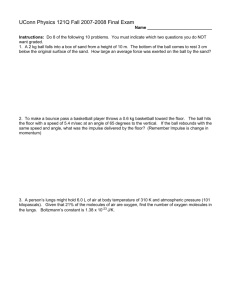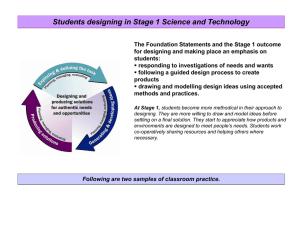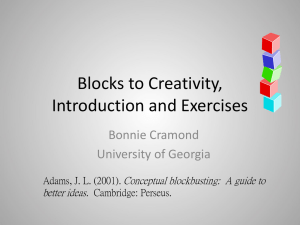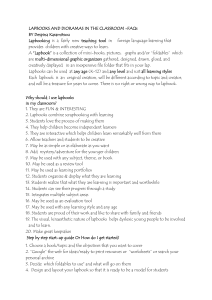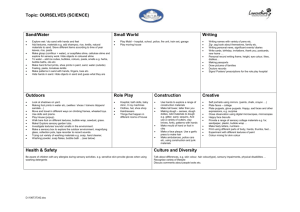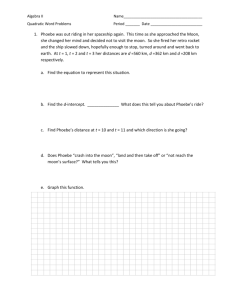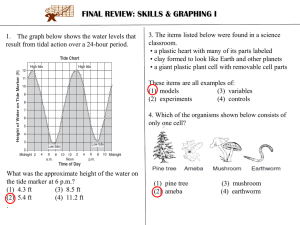Stages
advertisement
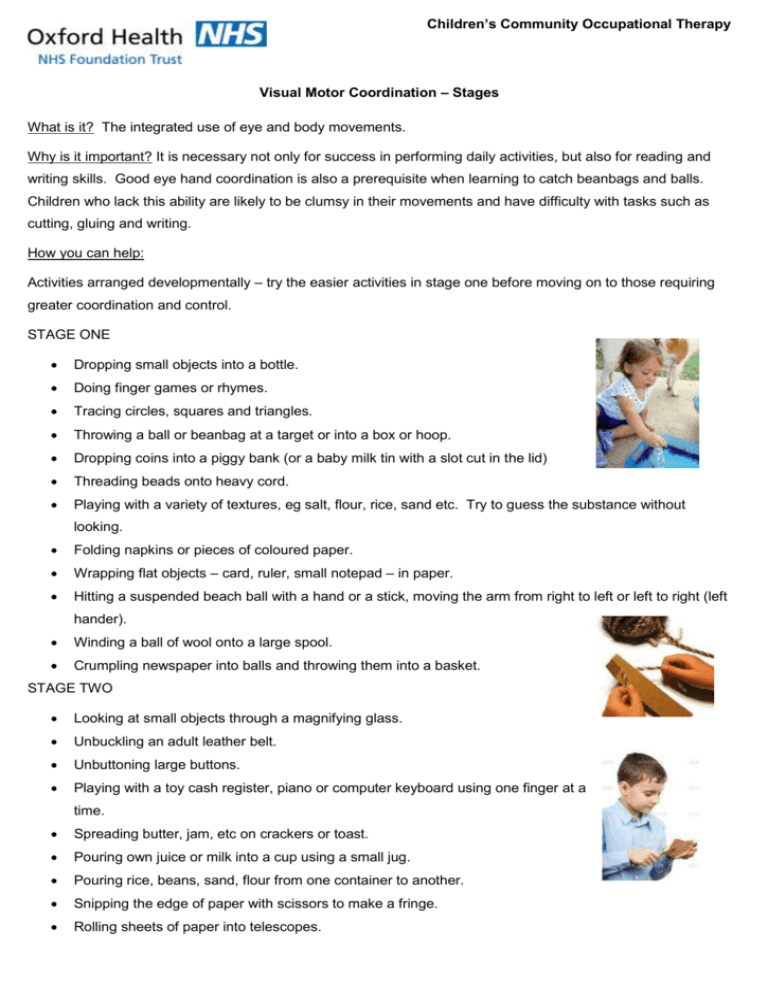
Children’s Community Occupational Therapy Visual Motor Coordination – Stages What is it? The integrated use of eye and body movements. Why is it important? It is necessary not only for success in performing daily activities, but also for reading and writing skills. Good eye hand coordination is also a prerequisite when learning to catch beanbags and balls. Children who lack this ability are likely to be clumsy in their movements and have difficulty with tasks such as cutting, gluing and writing. How you can help: Activities arranged developmentally – try the easier activities in stage one before moving on to those requiring greater coordination and control. STAGE ONE Dropping small objects into a bottle. Doing finger games or rhymes. Tracing circles, squares and triangles. Throwing a ball or beanbag at a target or into a box or hoop. Dropping coins into a piggy bank (or a baby milk tin with a slot cut in the lid) Threading beads onto heavy cord. Playing with a variety of textures, eg salt, flour, rice, sand etc. Try to guess the substance without looking. Folding napkins or pieces of coloured paper. Wrapping flat objects – card, ruler, small notepad – in paper. Hitting a suspended beach ball with a hand or a stick, moving the arm from right to left or left to right (left hander). Winding a ball of wool onto a large spool. Crumpling newspaper into balls and throwing them into a basket. STAGE TWO Looking at small objects through a magnifying glass. Unbuckling an adult leather belt. Unbuttoning large buttons. Playing with a toy cash register, piano or computer keyboard using one finger at a time. Spreading butter, jam, etc on crackers or toast. Pouring own juice or milk into a cup using a small jug. Pouring rice, beans, sand, flour from one container to another. Snipping the edge of paper with scissors to make a fringe. Rolling sheets of paper into telescopes. STAGE THREE Creating roads in a sandbox with small cars, trucks, etc. Using toothpicks or coloured sticks to imitate. Using sieves of different sizes sift sand, pebbles, aquarium gravel. Washing and rinsing small plates, cups and saucers. Making crayon rubbings of materials fixed to the table. Unscrewing and screwing up bottles with small lids. Sharpening pencils with a wall-type pencil sharpener. Creating a collage using a variety of textures (paper, fabric, foods, natural materials, etc) STAGE FOUR Putting paperclips on paper. Taking rings off, putting them on. Opening and closing safety pins. Putting dressmaking pins into a pincushion, one at a time. Screwing large nuts and bolts together. Making a snowman or similar shape from clay or playdough. Thread a large needle with twine (or dental floss). Sharpen pencils with a hand-held pencil sharpener. Wind up an alarm clock. Unlock locks with keys. Deal and shuffle playing cards.
